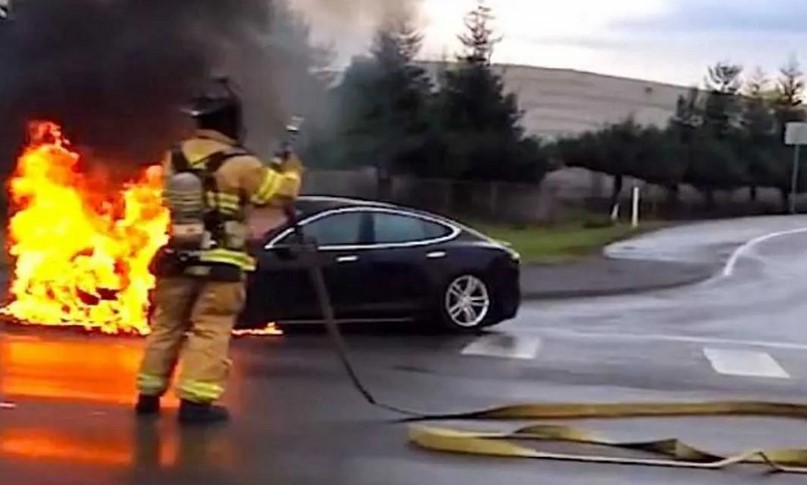As Hurricane Milton approached Florida on October 9, officials, particularly in Tampa, raised alarms regarding the fire risks associated with electric vehicles (EVs) that could become submerged in floodwaters. During a press conference, Tampa Mayor Jane Castor emphasized the importance of positioning EVs on higher ground within parking structures to minimize flood damage and potential fire hazards. The concern stems from the fact that electric batteries can emit dangerous fires when they come into contact with saltwater-damaged components or floodwaters, a risk that was notably highlighted after Hurricane Helene earlier in the month, wherein multiple house fires were reported due to compromised electric vehicles.
Florida Governor Ron DeSantis previously echoed these cautions, noting that saltwater exposure can lead to short-circuiting of EV batteries, resulting in thermal runaway—an uncontrollable fire scenario. The Tampa mobility department took proactive measures by removing parking fees as a way to encourage EV owners to utilize upper levels of garages, thereby reducing the likelihood of flooding and fire risks. Warnings in the form of public alerts were issued, underscoring that prior incidents had resulted in actual property loss and could potentially escalate during Hurricane Milton.
Florida’s Chief Financial Officer and State Fire Marshal, Jimmy Patronis, further emphasized the growing concern about EV-related hazards during storm surges, mentioning that his office had tracked numerous lithium-ion battery fires related to the previous hurricane. He urged EV manufacturers to inform consumers about the risks of flooding, noting that compromised electric devices should be moved away from residential areas and stored in open spaces. This focus on safety is paramount, as Patronis described flooded EVs and related devices as “ticking time bombs” that pose a significant fire risk if not handled properly in the aftermath of storms.
To mitigate these risks, the fire marshal underscored essential safety tips, such as removing any compromised vehicles from residences immediately, maintaining proper ventilation in storage areas, and ensuring that vehicles are not charged during this period. Additionally, it was recommended to keep the vehicle outside if possible and to avoid contact with high-voltage batteries if signs of damage appear. The advice is tailored to ensure that owners follow manufacturer guidelines to avoid further complications.
In response to these concerns, Tesla has proactively issued guidelines aimed at owners residing in potential flood zones. Their recommendations include relocating vehicles to higher ground ahead of storm events and promptly contacting authorities if any noticeable signs of fire or smoke are observed. For vehicles impacted by flooding, it’s advised to notify insurance providers and undergo safety inspections, with Tesla offering specific assistance for their users. This highlights an urgent need for ongoing dialogue between manufacturers and consumers on safety measures, especially during extreme weather events.
Past hurricanes, most notably Hurricane Ian, have revealed similar challenges, with authorities noticing an increase in EV malfunctions and subsequent fire incidents as battery corrosion led to fires. Since the initial observations of EV-related issues following Superstorm Sandy in 2012, it has become increasingly crucial for emergency management and fire response teams to adapt to these new complications posed by advanced vehicle technologies amid severe weather conditions. This situation continues to raise vital questions about the safety of electric vehicles in flood-prone areas and the responsibilities of manufacturers in ensuring user safety during natural disasters.

